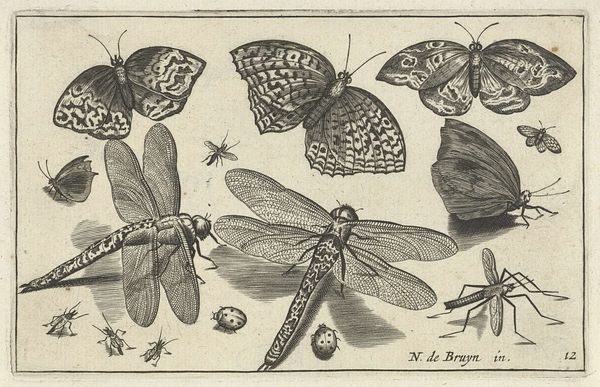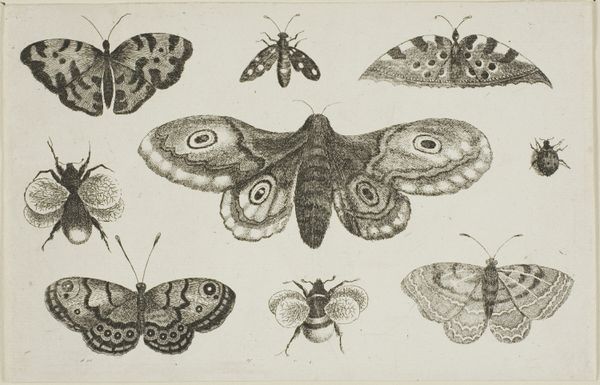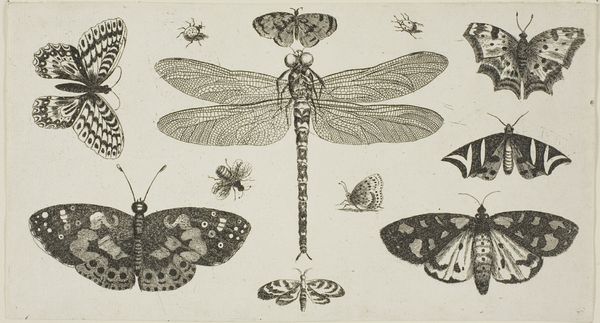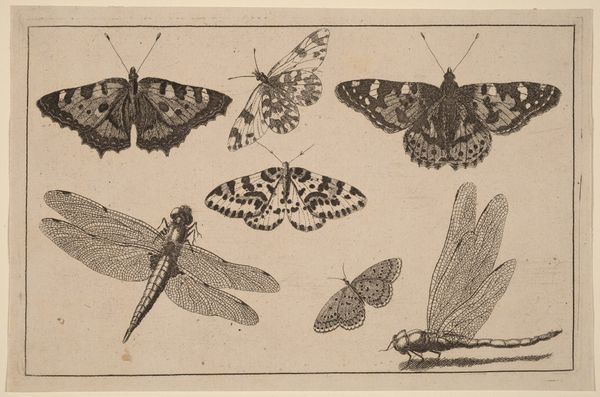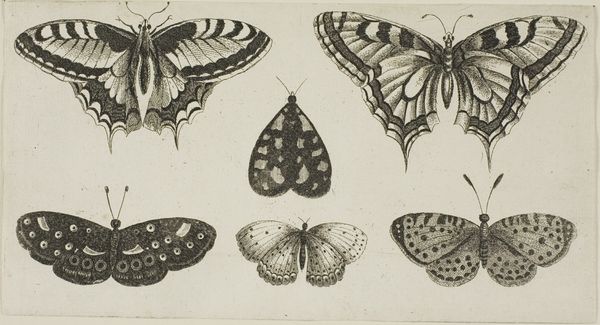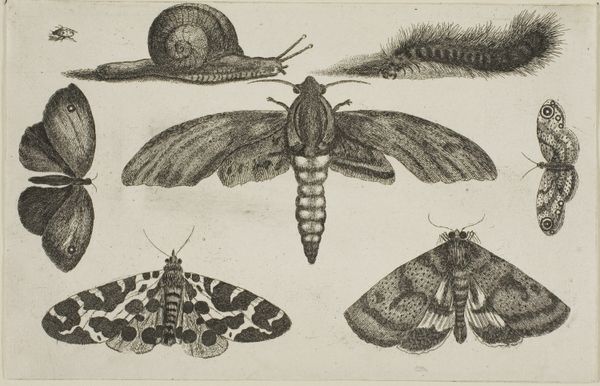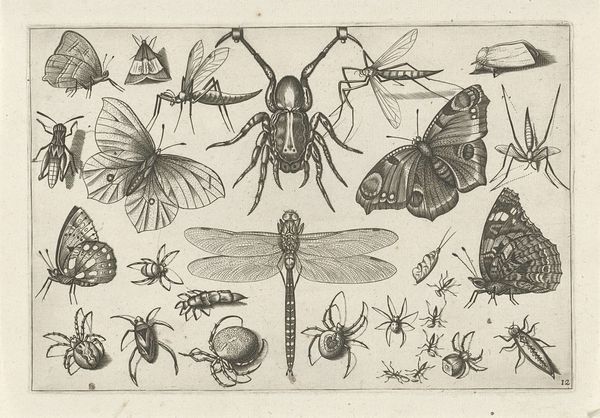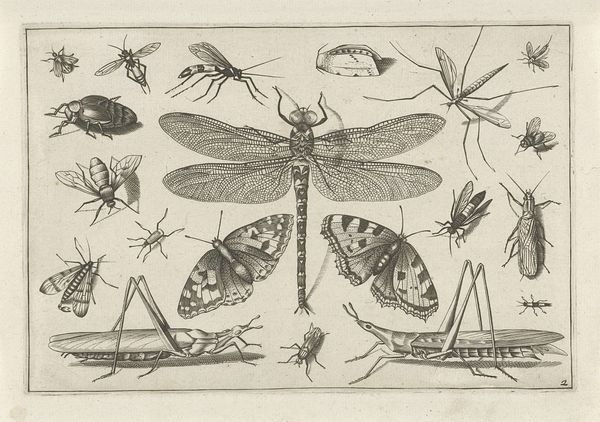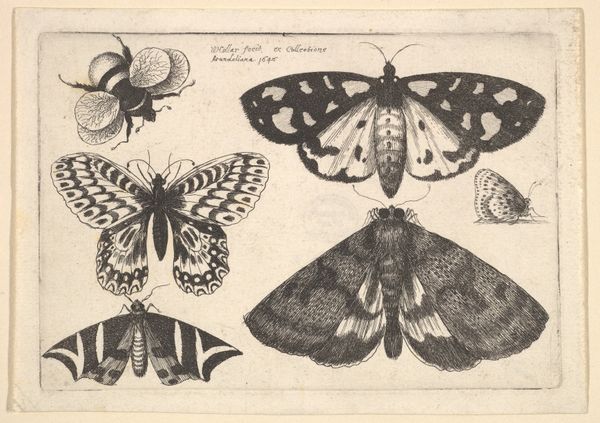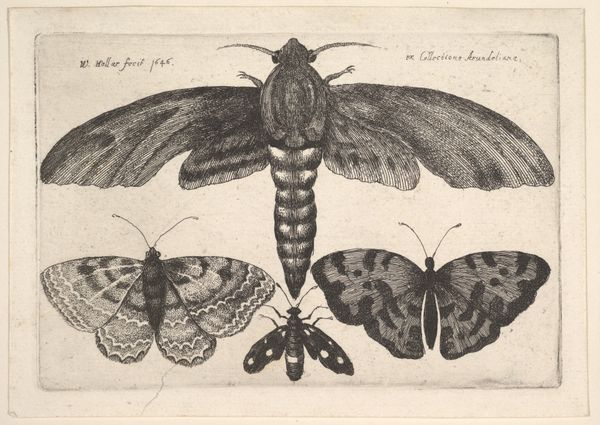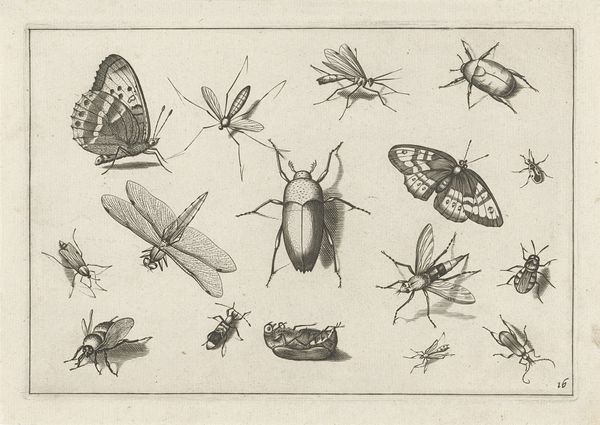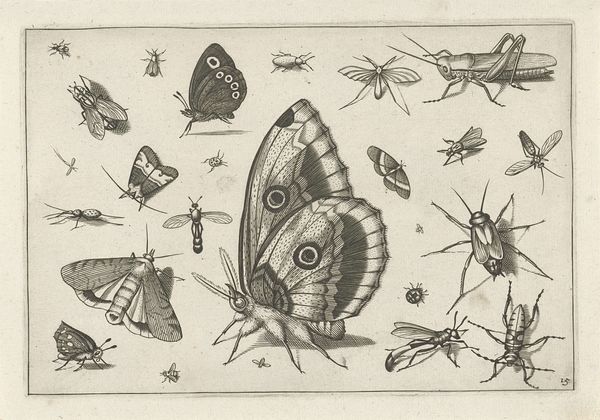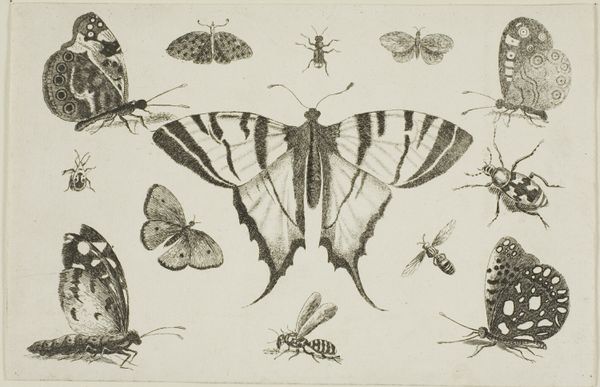
drawing, print, engraving
#
drawing
# print
#
pen sketch
#
old engraving style
#
figuration
#
11_renaissance
#
line
#
northern-renaissance
#
engraving
#
realism
Dimensions: height 86 mm, width 125 mm
Copyright: Rijks Museum: Open Domain
Curator: Up next, we have "Butterflies and Dragonflies," created in 1594 by Nicolaes de Bruyn. It’s an engraving, a type of print, and is part of the Rijksmuseum collection. Editor: My immediate impression is one of scientific curiosity, even meticulousness. It reminds me of early naturalists carefully documenting their observations. The fine lines of the engraving capture delicate wing patterns, but I find it almost clinical, detached from any real sense of life. Curator: Exactly. Consider the symbolism—insects often represented the soul's journey or even the transience of life in that period. Butterflies, especially, were potent symbols of transformation and resurrection, moving from earthbound caterpillar to free-flying beauty. But also think about the rising merchant class at the time, and the rise of science and nascent approaches to a classification of the world. Editor: So the engraving operates on several levels. There’s a spiritual or philosophical undercurrent reflecting on the soul's evolution and the temporary nature of earthly existence. It reminds one that natural science was rapidly being defined and formalized at the same period. Who exactly was the audience? Curator: Certainly, wealthy merchants and burgeoning scientists were a likely market. They might have collected such prints as symbols of status and of burgeoning intellectual prowess. The insects, presented so meticulously, suggest both careful observation and perhaps a desire to categorize and understand the natural world, in terms of art history also marking a transition from the religious paintings to scientific study. Editor: I agree, but let’s not overlook how this feeds into a broader cultural understanding. The Dutch Golden Age was on the horizon, a period marked by intense trade, scientific advancement, and, naturally, colonization. Collecting and classifying specimens, as seen in this engraving, was an active form of establishing mastery, placing European culture at the peak of awareness, influencing how these delicate creatures would later be viewed by an expansionist world. Curator: An excellent point! Seeing them this way gives added context. Now that you mentioned expansion, it would seem to mirror our own. I think I’ll observe and catalog all I’ve learned today too. Editor: And I'm off to rewrite my cultural theories. There’s no lack of reinterpreting that is needed on these older works, always!
Comments
No comments
Be the first to comment and join the conversation on the ultimate creative platform.
